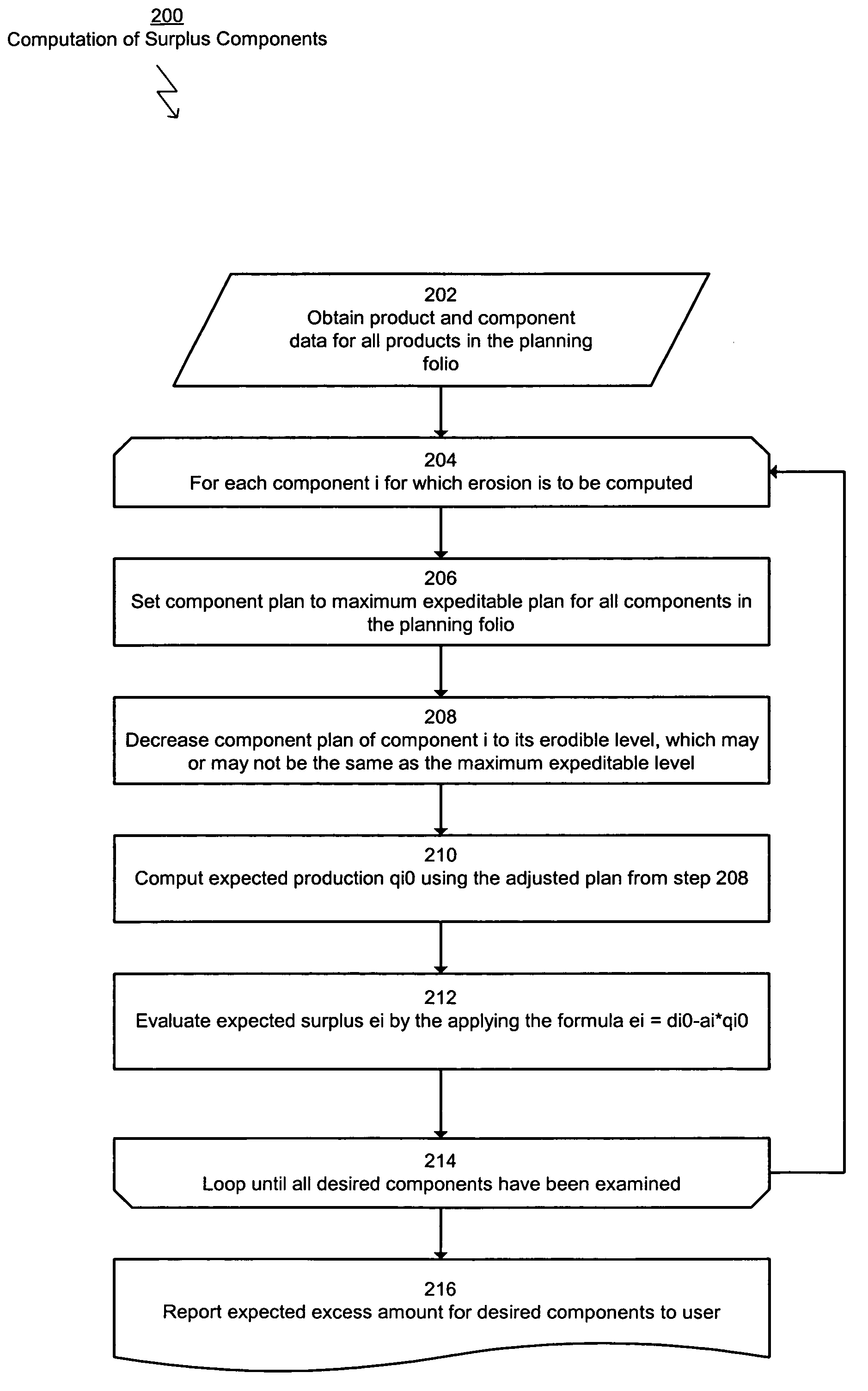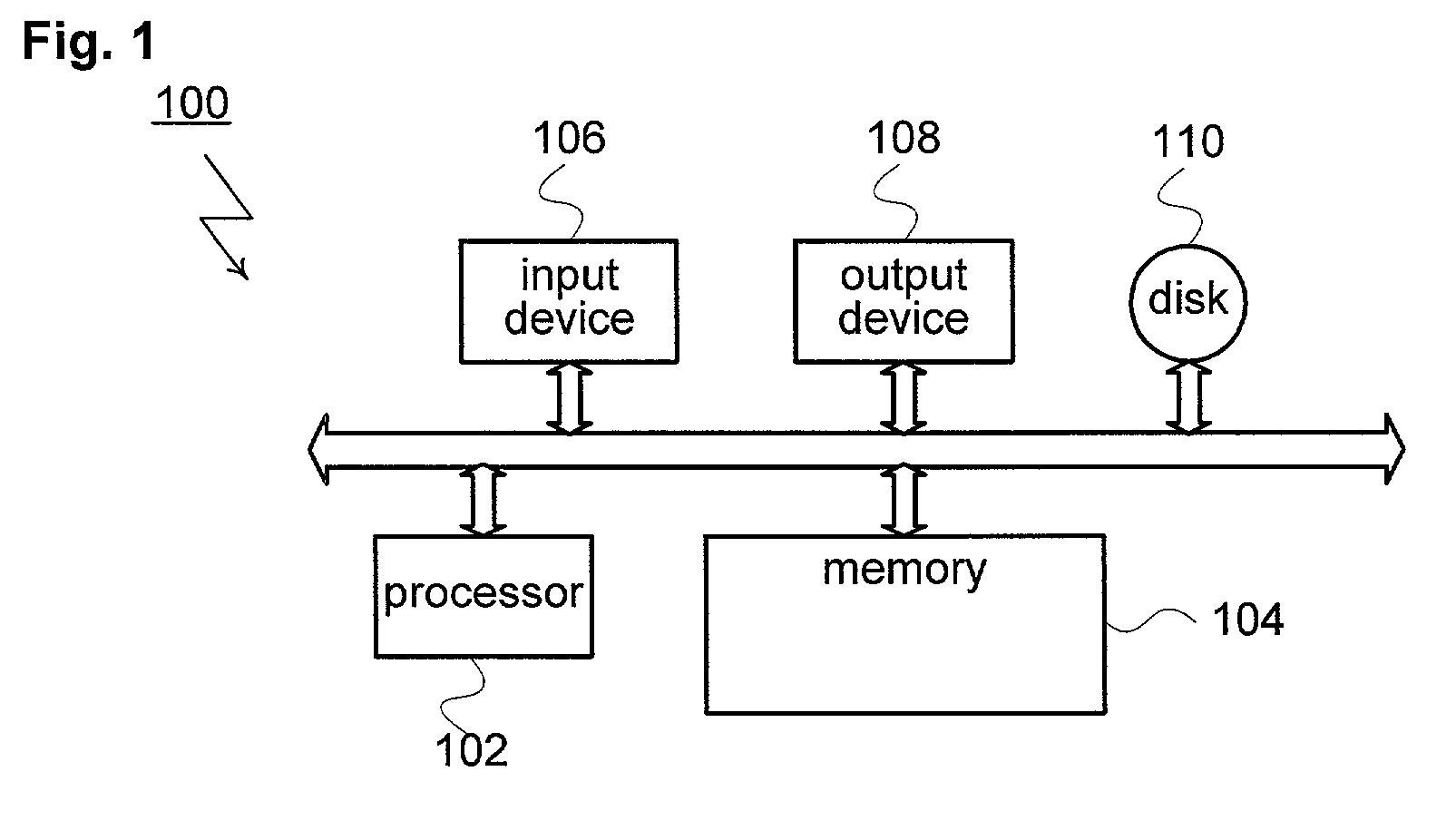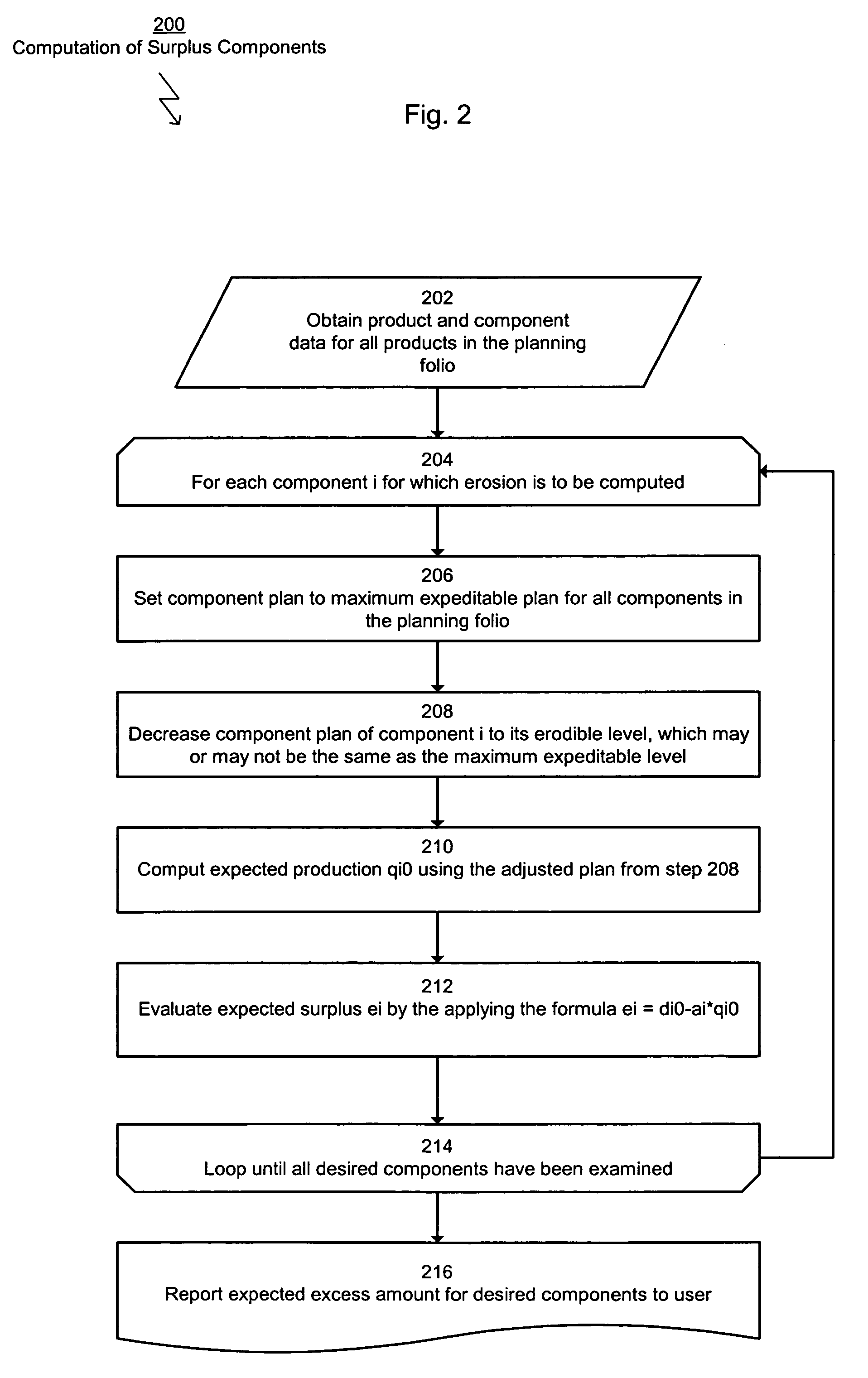Method and business process for the estimation of erosion costs in assemble-to-order manufacturing operations
a manufacturing operation and business process technology, applied in the field of resource planning methods, can solve the problems of wasting resources, unable to meet demand, delay in utilizing excess inventory, etc., and achieve the effect of more informed business decisions and particularly complicated estimation of erosion costs
- Summary
- Abstract
- Description
- Claims
- Application Information
AI Technical Summary
Benefits of technology
Problems solved by technology
Method used
Image
Examples
examples problems addressed
BY THE PRESENT INVENTION
[0027]1. How to compute the expected component surplus at the end of a particular planning period[0028]2. How to compute the value of expected erosion costs for a particular set of components in a planning period[0029]3. Computation of total expected erosion costs in a company for a particular planning period
[0030]The essence of this invention is the ability to solve the above problems in cases where there is a plurality of products and components.
PUM
 Login to View More
Login to View More Abstract
Description
Claims
Application Information
 Login to View More
Login to View More - R&D
- Intellectual Property
- Life Sciences
- Materials
- Tech Scout
- Unparalleled Data Quality
- Higher Quality Content
- 60% Fewer Hallucinations
Browse by: Latest US Patents, China's latest patents, Technical Efficacy Thesaurus, Application Domain, Technology Topic, Popular Technical Reports.
© 2025 PatSnap. All rights reserved.Legal|Privacy policy|Modern Slavery Act Transparency Statement|Sitemap|About US| Contact US: help@patsnap.com



